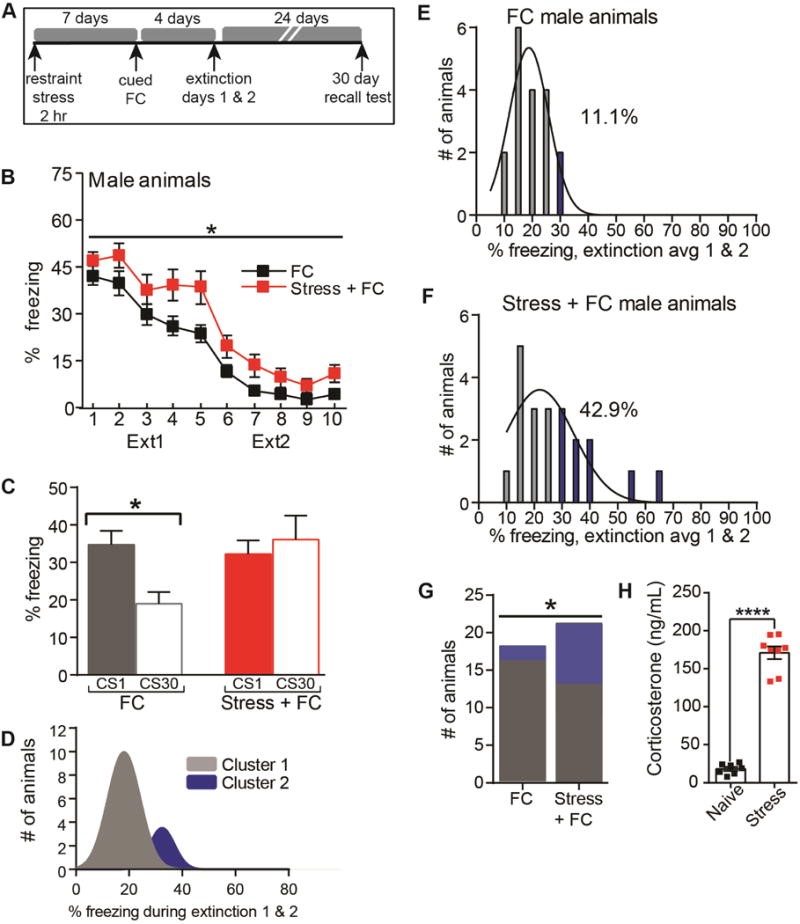The fear conditioning model is a rodent model of PTSD. Mice are exposed to a single 2-hour restraint episode in clean, ventilated, 50ml conical vials (such as Falcon tubes) one week prior to conduction of fear conditioning protocol, in which each mouse is entered into the conditioning chamber for two minutes of uninterrupted exploration followed by two blocks of 20-second 80Db 2000Hz tone (conditioned stimulus) paired with 2-second 0.5mA footshock (unconditioned stimulus), and further 60 seconds of uninterrupted exploration of the chamber. Plasma corticosterone level is measured 30 minutes after the end of FC protocol. Four days after conditioning mice undergo 2-day intensive extinction protocol and the time mice spend freezing in each extinction trial is measured. The combination of pre-exposure to stress with FC protocol induce higher plasma corticosterone level and resistance to fear extinction.
Sillivan et al 2017, Biol Psychiatry Figure 1 (A) Overview of SEFL behavioral paradigm. (B) Course of extinction in SEFL (Stress+FC) and FC controls over two days. Shown are five bins (6 tones each) of CS presentations during extinction. (C) Measure of extinction that occurred on Day 1. (D) Unsupervised cluster analysis of average freezing during extinction. (E–G) Distribution analysis of average freezing over extinction days 1 and 2, separated by treatment and cluster group. Cluster 1, grey bars; Cluster 2, blue bars. FC n=18, Stress+FC n=21. (H) Plasma corticosterone levels were measured in stressed or naïve (handled) mice immediately after restraint. Naïve n=7, Stress n=8. *p<.05, ****p<.0001. Error indicates s.e.m.
References
Sillivan SE, Joseph NF, Jamieson S, King ML, Chevere-Torres I, Fuentes I, Shumyatsky GB, Branteley AF, Rumbaugh G, Miller CA. Susceptibility and resilience to posttraumatic stress disorder-like behaviors in inbred mice (2017). Biol Psychiatry 82(12):924-933

